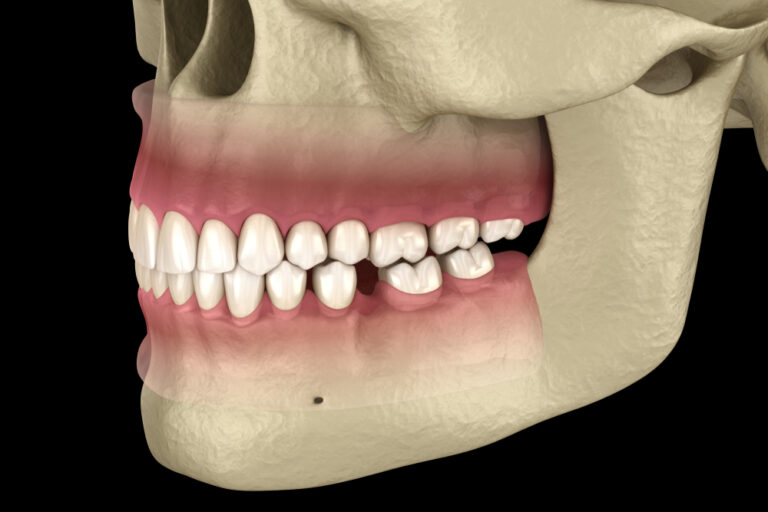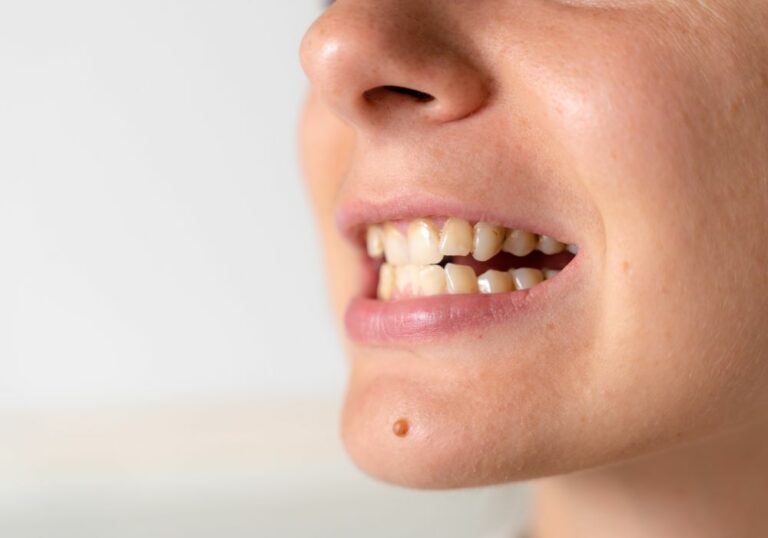A Closer Look at the Causes of Tooth Pain and Sensitivity
The consumption of chocolate and other sugar-filled treats can often lead to tooth pain and sensitivity. While a small tinge of pain may subside quickly, ongoing discomfort indicates a larger problem requiring dental attention. There are several reasons teeth may hurt when eating sweets:
Tooth Decay
Tooth decay is the number one reason for tooth sensitivity and pain. Also known as dental caries or cavities, tooth decay occurs when plaque bacteria metabolize sugar and produce acids that destroy tooth enamel and dentin.
- Enamel erosion – The acid begins eroding microscopic pits into the enamel, which is the outer protective layer of the tooth crown. Enamel is the hardest substance in the human body, made up primarily of mineral salts and calcium. But prolonged acid attacks break down this mineralized surface.
- Dentin exposure – With enough erosion, the acid penetrates through the enamel to the softer dentin layer underneath. Dentin makes up the bulk of the tooth and contains thousands of tiny fluid-filled tubules leading directly to the tooth’s innermost nerves.
- Nerve irritation – Once dentin is exposed, external stimuli like temperature, pressure, or sugar easily reach the nerve through the tubules, causing sharp pain and sensitivity. The patient may describe the pain as thermal (hot/cold), tactile (touch), or chemical (sweets).
- Cavity formation – As acid demineralization of enamel and dentin continues, a hole or cavity forms in the tooth. Bacteria and food debris enter the cavity, expanding decay into the inner pulp chamber. The infected pulp becomes inflamed, leading to severe constant pain felt deep within the tooth.
Dental Erosion
Dental erosion is the loss of tooth enamel caused by acids from food and drinks. Although sugar itself does not erode enamel, many sugary foods contain acids capable of dissolving the mineralized enamel surface:
- Fruit acids – Fruits like oranges, grapes, and strawberries contain citric and malic acids. These organic acids are also added to candies to create tart flavors.
- Carbonated beverages – Sodas contain citric and phosphoric acid that wears away enamel with prolonged exposure. The bubbly carbonation also forces the acids deep into pits and fissures where they lounge and erode.
- Wine – Wines have a very low pH due to the presence of acid compounds like tartaric, citric, malic, lactic and succinic acid. Swishing wine around the mouth accelerates erosion.
Acidic candies like Warheads, Lemonheads, and Sour Patch Kids are especially problematic because they coat the teeth with erosive organic acids while bathing them in sugar. Their sticky consistency also adheres them to tooth surfaces longer, encouraging demineralization.
As enamel thins, dentin becomes exposed and teeth become super sensitive to thermal, tactile, and chemical pain. Advanced erosion may require special adhesive dentin bonding techniques to seal and reharden damaged areas.
Temperature Sensitivity

Sudden shifts in hot or cold temperatures can cause short, sharp pains in teeth. This temperature sensitivity often occurs when drinking or eating something cold after consuming a hot food/beverage, or vice versa. The abrupt change sends a painful jolt to the tooth’s inner nerves. However, not all temperature sensitivity is related to food and drinks.
Some individuals simply have teeth that are intrinsically sensitive to shifts in temperature due to structural flaws:
- Cracked teeth – Fractures and microcracks allow external stimuli deep access to the nerves.
- Worn enamel – Thinning or eroded enamel provides less insulation to temperature changes.
- Gum recession – Loss of root protecting gum tissue exposes more temperature-sensitive cementum.
- Exposed dentin – Wear, abrasion or erosion reveals the fluid-filled dentinal tubules.
- Tooth crowding – Crooked overlapping teeth can lead to thinning enamel.
Such patients may find that even breathing in cold winter air or drinking hot coffee without added sugars causes pain. Dentists can treat intrinsic sensitivity by sealing cracks, grafting gum tissue, and filling microscopic enamel pores.
Trigeminal Neuralgia
This chronic neuropathic pain condition affects the trigeminal nerve which transmits sensory information from the face to the brain. Even mild stimulation of the nerve’s branches in the teeth and gums can trigger an excruciating pain attack lasting several minutes or longer.
Trigeminal neuralgia has been described as feeling like an electric shock combined with burning, stabbing, and crushing sensations. The attacks are sporadic and unpredictable, often set off by chewing, brushing teeth, applying makeup, shaving, swallowing, or talking. Eating something as simple as a chocolate bar or ice cream can trigger an episode of searing facial pain.
While not life threatening, trigeminal neuralgia can significantly impact a patient’s quality of life. Thankfully there are medical and surgical interventions that provide relief by reducing nerve hyperactivity.
Common Culprits – Candy Ingredients That Promote Tooth Pain

Clearly, sugary treats like chocolate, candy, ice cream, and soda can provoke tooth sensitivity and discomfort. But what specific ingredients make these foods more likely to cause pain? Here are a few prime suspects:
High Sugar Content
Cavity causing bacteria feed on fermentable carbohydrates like sucrose and produce enamel-eroding acid as a byproduct. The more sugar a food contains, the more acid the plaque bacteria create. High sugar foods also increase the likelihood of super sticky plaque formation.
For example, milk chocolate contains 10-12 times more sugar by weight than dark chocolate with 70% cocoa or higher. The excess sugar in milk chocolate leads to greater acid production and subsequent pain compared to less sweet dark chocolate varieties.
Acidity
Foods and candies containing citric, malic, phosphoric, and other acids have an intrinsically low pH that softens and dissolves tooth enamel. Prolonged exposure is more likely to expose sensitive dentin. Acidic candies like Warheads and Toxic Waste candy have pH levels between 1 and 2, similar to battery acid!
Even chocolates contain some organic acids. But sour candies are by far more erosive due to their extreme acidity. Just a few acidic candies a week can cause noticeable enamel loss.
Stickiness
Gummy candies like licorice, caramels, jelly beans, and taffy adhere to tooth surfaces for extended periods as they slowly dissolve. This prolongs contact between the sugar and enamel, encouraging decalcification and loss of mineral content. Stickier candies also tend to force their way into pits and fissures, which are natural vulnerabilities in the enamel armor.
Hardness
Jawbreakers, lollipops, hard candy sticks, and other ultra hard sweets take longer to dissolve, slowly coating the teeth with sugar. The physical hardness of certain candies also puts more force on the teeth as you crunch down. This can advance cracks and defects that then become sensitive. Hardness, combined with sugar and acid, is triple trouble for enamel.
How Existing Dental Problems Magnify Pain

Unresolved dental issues like cavities, worn enamel, and gum disease make patients more likely to experience pain when eating sugary foods. The problems amplify nerve sensitivity already exacerbated by sugar and acid.
Untreated Cavities
Active decay is a major reason for sugar-induced pain as the acids penetrate deep into the tooth’s inner nerves. The more advanced the decay, the worse the pain, especially if the sugar seeps into the heavily innervated pulp. Just a few caries warrant filling before they progress and require root canals or extraction.
Eroded Enamel
When protective enamel erodes away, the exposed dentinal tubules trigger thermal, tactile, and chemical pain. Even mildly acidic or sugary foods that normally wouldn’t cause issues now inflame the unprotected nerves. Dentists can attempt to remineralize and rebuild enamel using fluoride applications.
Fractured Teeth
Cracked, broken, and chipped teeth become extremely sensitive as fractures act pathways to the nerves for temperature, pressure, and sugar stimuli. Just biting into hard candy could worsen the cracks. The fractured chunks must be bonded back in place or removed depending on severity.
Receding Gums
Gingival recession exposes more of the underlying tooth root and cementum. These materials do not have a strong enamel coating. As the gum pulls away, the nerves become more exposed to irritation from sugar and other triggers. Grafting procedures can help cover vulnerable root surfaces.
Worn Tooth Surfaces
Years of chewing and grinding wears down the enamel, particularly along the biting edge and where teeth rub together. This abrasion causes the teeth to flatten and nerves to be closer to the surface. Such patients are advised to increase enamel remineralization and avoid abrasives in toothpaste.
Bruxism
Clenching and grinding of teeth, especially during sleep, accelerates the wearing down of enamel from abrasion. Chomping into gooey caramels or chewing gum only enhances the grinding force. Those with bruxism need bite guards to prevent accelerated enamel damage during sleep.
Recent Dental Work
Procedures like fillings, crowns, dental cleanings, and teeth whitening make nerves hypersensitive for a period. Sugar is more likely to cause discomfort during the recovery period but this usually fades over several weeks as the nerves calm down. Gentler oral care and desensitizing toothpaste help.
Prevention Strategies and Oral Care Tips

While sugary sweets often contribute to dental sensitivity, you don’t necessarily need to eliminate them. Practicing good oral hygiene and making smart food choices can let you indulge without too much pain:
- Pick chocolate with 70% or higher cocoa content whenever possible. The less sugar, the better.
- Increase acidic candy consumption gradually to give enamel time to reharden between assaults. Don’t overdo sour candies.
- Eat sweets with meals instead of as stand alone snacks. Saliva production increases during meals which helps neutralize acids and wash sugars away.
- Rinse mouth with plain water or chew sugar-free gum after eating sticky, acidic, or sugary foods. This cleans remnants off teeth and stimulates saliva.
- Don’t brush immediately after consuming acidic foods or drinks which can damage enamel softened by the acid. Wait 30 minutes before brushing.
- Drink milk with sugary snacks whenever possible. The proteins and minerals in milk help remineralize enamel after an acid attack.
- Use fluoride toothpaste but avoid highly abrasive formulas if you have worn enamel or recession. Ask your dentist to recommend the appropriate level.
- Get prompt dental treatment for any underlying issues like cavities, cracked teeth, or gum disease to help resolve sensitivity.
- Talk to your dentist about prescription strength toothpastes, oral rinses, gels, and dental work to manage advanced sensitivity and expose nerves.
- Use a soft bristle toothbrush and avoid aggressive brushing to prevent enamel abrasion and recession that exacerbate sensitivity.
When To See A Dentist
While the occasional twinge from sugar is normal, more persistent pain requires professional attention. See a dentist immediately if you experience:
- Constant sharp pains that linger when eating hot, cold, sweet, or acidic foods
- Bleeding gums and extreme sensitivity when brushing teeth
- Visible cracks, pitting, staining, cavities, or excessive wear of enamel
- Swelling around the gums indicating infection
- Sudden unexplained toothaches and jaw pain with no apparent cause
- Difficulty biting or chewing foods without hitting a sensitive spot
- Pain severe enough to disrupt sleep or normal functions
The dentist can perform an oral exam to identify the underlying cause of sensitivity, whether it’s decay, erosion, fracture, recession, or nerve issues. From there they can recommend appropriate treatment to repair damage and prevent unnecessary pain.
Frequently Asked Questions about Sugar Sensitivity
Q1: Why do my teeth hurt every time I eat chocolate or candy?
Eating sugary foods feeds the bacteria that create enamel-eroding acid. Sweets like chocolate and candy also contain acids themselves that dissolve away enamel over time. This decay and erosion thins enamel, exposing sensitive dentin and nerves. Damaged enamel conducts pain signals from sugar, hot, cold, pressure, etc. directly to nerves.
Q2: Is it ok to eat sour candy if I have sensitive teeth?
Sour candy is very high in acids that erode tooth enamel. Just a few minutes of sour candy exposure can demineralize enamel. Frequent consumption will dissolve enamel away faster, exacerbating sensitivity issues. Those with thin enamel should minimize or avoid very acidic candies to prevent pain.







